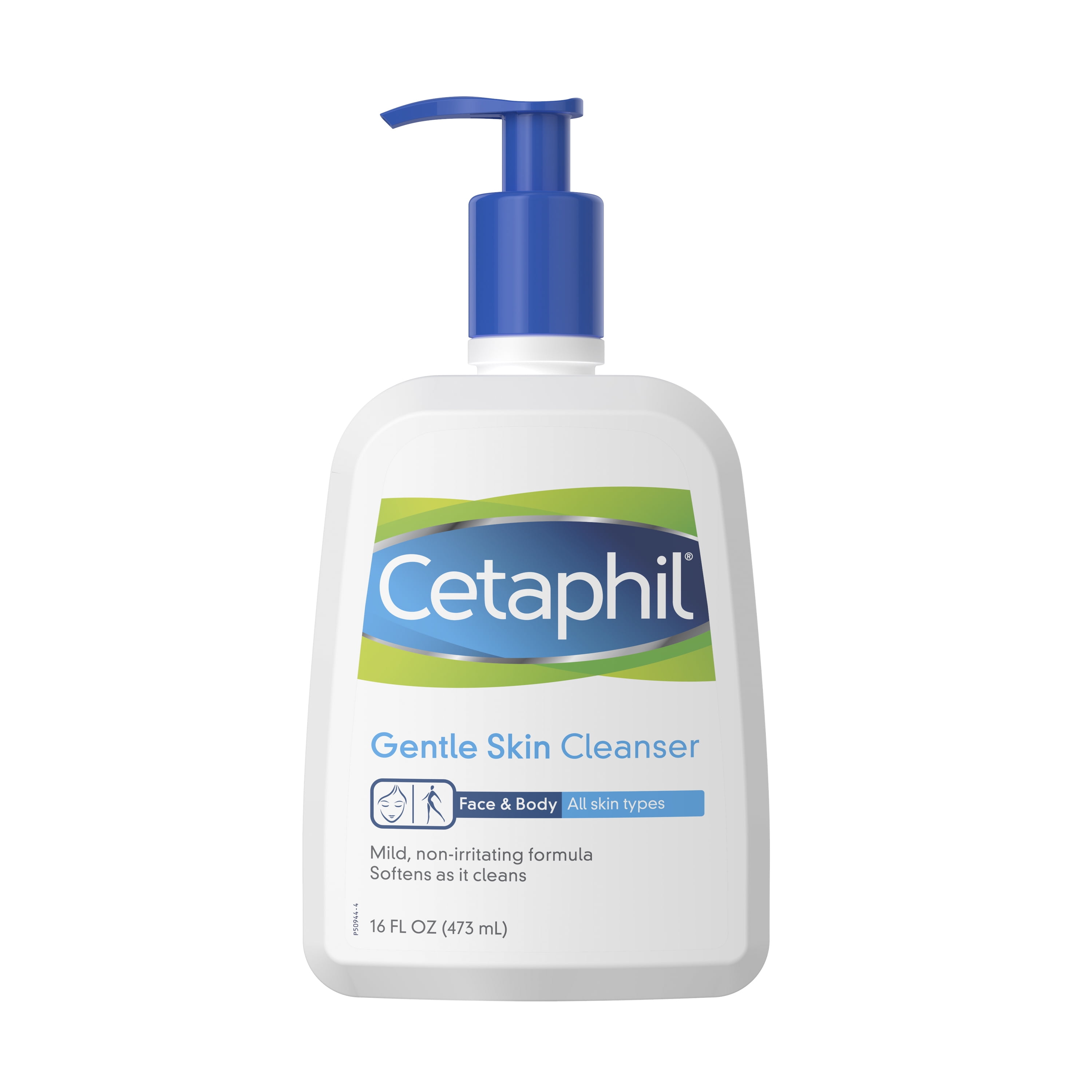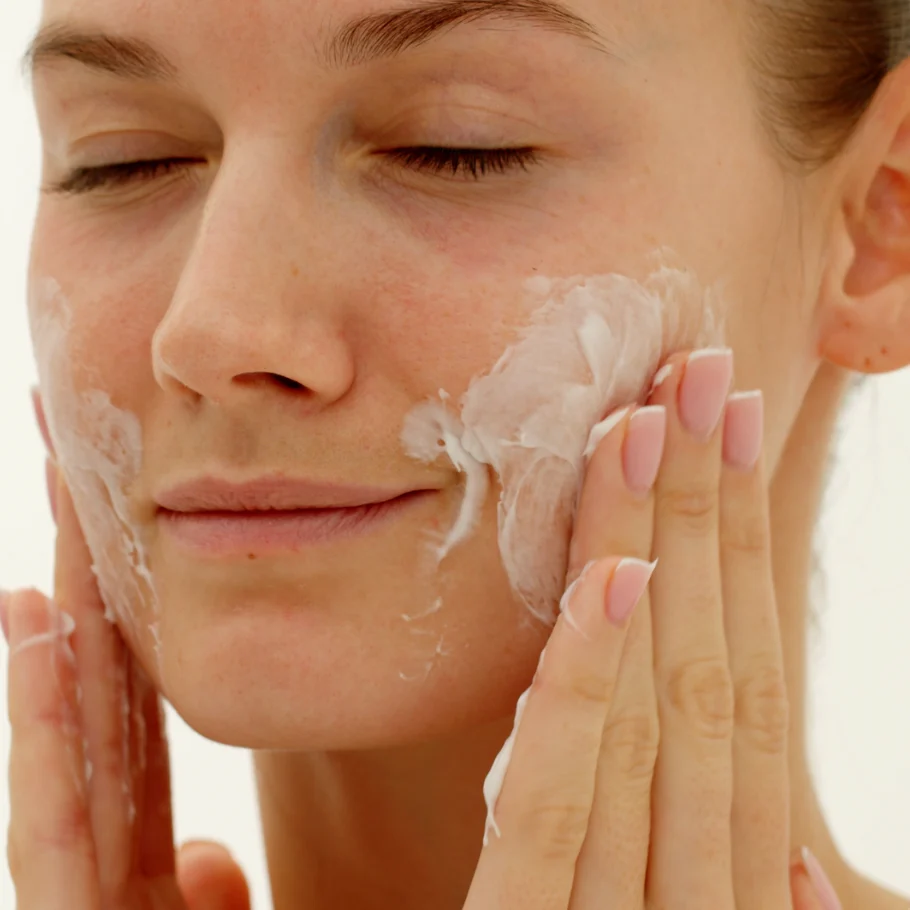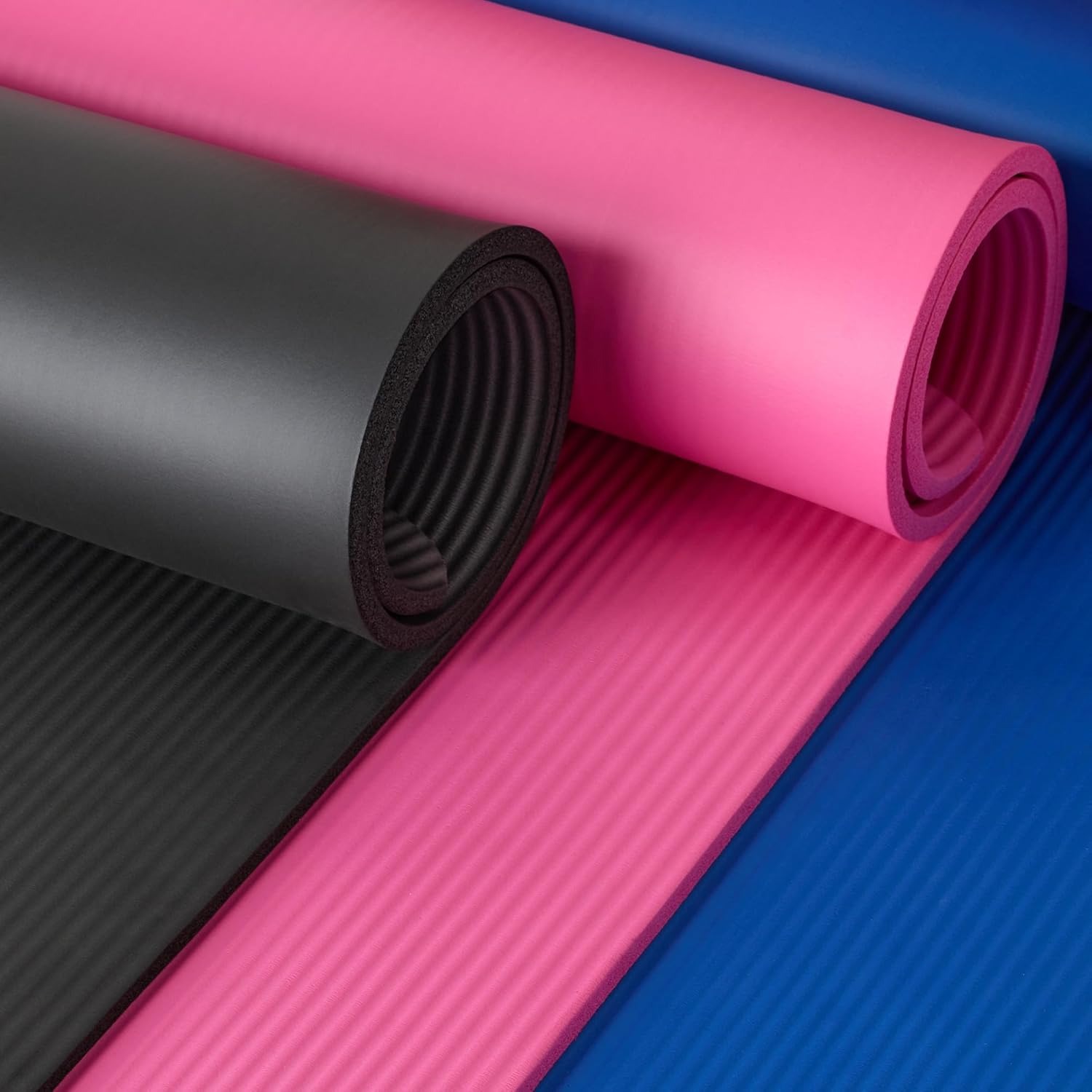Identifying Sensitive Skin Types
Proper skin care begins with understanding your skin type, especially when dealing with sensitive skin. Recognizing sensitive skin is crucial as it guides you to select the right facial cleanser sensitive skin products.
Signs of Sensitive Skin
Sensitive skin can show many signs indicating it needs extra care. Look for symptoms such as:
- Redness and rash-like appearances.
- Feelings of itchiness or stinging, especially after using certain products.
- Dry patches that may result in a tight, uncomfortable sensation.
- Frequent breakouts or skin reactions when trying new products.
These signs are a clear message from your skin. They suggest you should opt for gentle cleansers tailored for sensitive skin types.
Common Triggers for Sensitive Skin
Understanding what triggers your sensitive skin can help prevent unwanted reactions. Some common triggers include:
- Harsh weather conditions, like strong winds or extreme cold.
- Environmental pollutants that can irritate the skin.
- Certain ingredients in skincare products. This includes alcohol, fragrance, and synthetic dyes.
- Stress and hormonal changes that can affect skin health.
- Diet choices, such as spicy foods or allergens, that might influence skin condition.
Avoiding these triggers and choosing a facial cleanser sensitive skin-friendly can dramatically improve your complexion.
Key Ingredients in Cleansers for Sensitive Skin
Choosing the right facial cleanser sensitive skin demands thoughtful consideration of its ingredients. Gentle ingredients can help prevent irritation. At the same time, they provide the cleaning action needed to keep skin clear. When looking for a facial cleanser sensitive skin formula, focus on both what it contains and what it avoids.
Soothing Agents to Look For
Aim for facial cleansers that incorporate calming and soothing agents. Natural components like aloe vera can provide cooling relief. Chamomile is known for its gentle, anti-inflammatory properties. Other helpful ingredients include allantoin and glycerin. They support the skin’s natural barrier and can reduce redness. Hyaluronic acid is a star for hydration without heaviness. Oatmeal can ease itching and irritation. Antioxidants such as vitamin E protect the skin from environmental stressors.
Ingredients to Avoid
Sensitive skin reacts poorly to harsh chemicals. Alcohol can strip moisture from the skin, leading to dryness and discomfort. Fragrances and synthetic dyes often trigger allergic reactions or irritation. Sulfates can be too harsh, stripping the skin’s natural oils. Parabens and phthalates are controversial for safety reasons. Avoiding these can steer clear of potential reactions. Opt for fragrance-free, hypoallergenic options. This can improve skin health over time. Always read labels carefully. Knowing what’s inside your cleanser is key to finding the best match for sensitive skin care.

Top Rated Facial Cleansers for Sensitive Skin
Finding the best facial cleanser sensitive skin can transform your skincare routine. The top-rated products often feature gentle, yet effective ingredients.
Cleansers with Natural Ingredients
Natural ingredients are key for minimizing irritation. Look for facial cleansers with ingredients like green tea, chamomile, or aloe vera. These soothe skin while cleansing. Products with cucumber extract can help reduce puffiness and calm the skin. Jojoba oil is another good choice. It helps to moisturize without clogging pores.
Cleansers with Hydrating Properties
Hydration is crucial for sensitive skin. It helps maintain a healthy skin barrier. Find cleansers with hyaluronic acid or glycerin. These ingredients draw moisture into the skin for a supple feel. Cleansers with ceramides can also aid in restoring the skin’s moisture barrier. Avoid products with alcohol or sulfates, as they can strip the skin of its natural oils.
How to Use Facial Cleansers Properly on Sensitive Skin
Using a facial cleanser sensitive skin properly can prevent irritation. Proper usage is as essential as choosing the right product. To ensure that you take the best care of your sensitive skin, there are guidelines to follow.
Step-by-Step Cleansing Routine
Start with clean hands to avoid transferring dirt to your face. Wet your skin with lukewarm water; hot water can cause redness and irritation. Apply a small amount of cleanser, using gentle, circular motions. Avoid scrubbing, as it can damage sensitive skin. Rinse thoroughly with lukewarm water and pat your face dry with a soft towel. Do not rub; it could aggravate your skin.
Tips for Avoiding Skin Irritation
Choose a time to cleanse when your skin is free of makeup or heavy dirt; it reduces the need for harsh scrubbing. After cleansing, apply a gentle, fragrance-free moisturizer to keep your skin hydrated. Always introduce new products gradually, allowing your skin to adjust. Avoid using too many products at once; it can overload and irritate the skin. Remember to check the product labels for harsh ingredients and opt for hypoallergenic options designed for facial cleanser sensitive skin.

The Importance of Patch Testing New Cleansers
Before introducing a new facial cleanser to your sensitive skin, performing a patch test is critical. This precaution can steer you away from potential adverse reactions. Patch testing helps identify if a product is safe for your skin type. It minimizes the risk of irritation or allergic responses that can aggravate sensitive skin.
How to Conduct a Patch Test
Select a small, discreet area of skin, like behind the ear or the inner forearm. Apply a dab of the facial cleanser sensitive skin formula you’re testing. Wait for 24 to 48 hours. Look for any signs of discomfort or reaction. You might feel an urge to scratch. Redness, bumps, or swelling could also appear. If you notice any of these, discontinue use immediately.
Interpreting Patch Test Results
Clear skin after the waiting period usually means the product is safe for you. Any reactions during the test suggest that you might be sensitive or allergic to an ingredient. If you experience a reaction, clean the area with water and a gentle soap. If severe reactions occur, it is best to seek medical advice. Patch testing helps to prevent full-scale skin upset when using a new facial cleanser sensitive skin product.
Incorporating Facial Cleansers into a Sensitive Skin Care Regimen
Ensuring your sensitive skin stays healthy involves more than just choosing the right facial cleanser sensitive skin formula. It requires a holistic approach to your daily skin care regimen. The goal is to keep the skin cleansed, hydrated, and protected without causing irritation or discomfort.
Building a Sensitive Skin-Friendly Routine
Creating a routine for sensitive skin means being gentle and consistent. Here are steps to build your routine:
- Cleanse Gently: Use a mild facial cleanser sensitive skin product. Apply it with soft, circular motions. Avoid rubbing the skin too hard.
- Tone Softly: If you use a toner, pick an alcohol-free option. It should be gentle and hydrating.
- Moisturize Daily: Right after cleansing, apply a fragrance-free moisturizer. Look for products with hyaluronic acid or ceramides.
- Protect Your Skin: Never forget sunscreen during the day. Choose a formula designed for sensitive skin and free from harsh chemicals.
- Be Mindful of Ingredients: Always read labels. Avoid irritants like alcohol, fragrances, and dyes. Keep your routine simple.
By following these steps, you can help maintain your skin’s health and prevent adverse reactions.
The Role of Moisturizers and Sunscreen
Moisturizers and sunscreen are vital parts of a sensitive skin care regimen:
- Moisturizers: They help in retaining water in the skin, keeping it supple and preventing dryness.
- Sunscreen: It protects against UV rays that can irritate sensitive skin and cause damage.
Choose products that are free from fragrances and alcohol to reduce the risk of irritation. For sunscreen, mineral-based formulas with zinc oxide or titanium dioxide are often more suitable for sensitive skin. Remember to apply these daily as part of your sensitive skin care routine.

Understanding the pH Balance of Skin Care Products
The pH level of skin care products is crucial, especially for sensitive skin. It needs balance to maintain skin health. Skincare with the wrong pH can harm the skin barrier. This may lead to dryness, irritation, or breakouts. Facial cleansers should match the skin’s natural pH.
The Impact of pH on Sensitive Skin
Sensitive skin’s natural pH is slightly acidic, around 4.5 to 5.5. This acidity helps fend off harmful bacteria and maintains hydration. Products with a higher pH can disrupt this balance, causing discomfort. Look for cleansers that have a similar pH to skin’s natural state. This ensures less disturbance and keeps skin calm and healthy.
Choosing the Right pH in Facial Cleansers
When picking a facial cleanser sensitive skin, check the pH value. Choose products labeled as ‘pH-balanced.’ These are formulated to match the skin’s acidity. A pH-balanced facial cleanser sensitive skin will cleanse without stripping natural oils. It leaves skin feeling soft and soothed. Avoid facial cleansers with a high pH as they can be drying. Stick to a gentle, pH-balanced facial cleanser sensitive skin for the best care.



